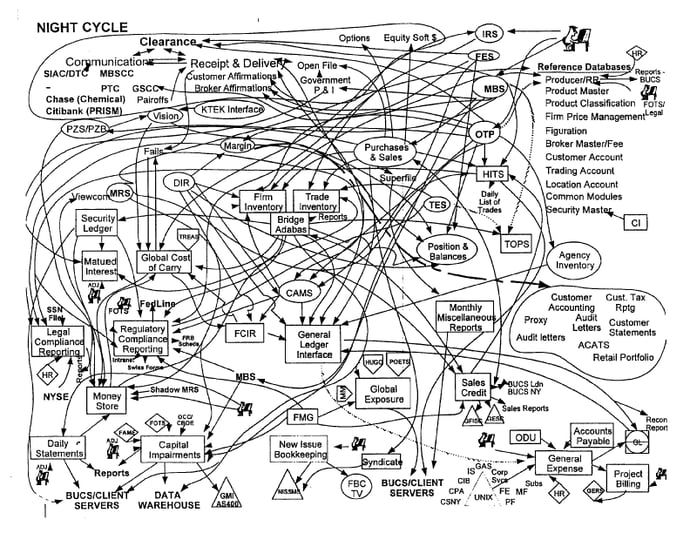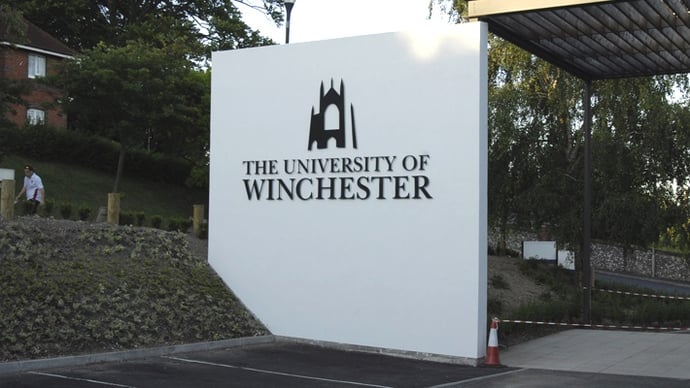So why write an article on how to do so?
Well actually, it isn’t. This is however an article on what to do, when you are tasked with improving your business processes, before you know what they are.

Business process improvement in the real world
In the real world, the one that we all live in, once an area of your business or organisation is identified as having a problem – it needs fixing. And it needs fixing quickly.
Senior management want to see an action plan. They want reports, they want charts, they want results.
The problem with rushing change
However, if you don’t understand the area of the business with the problem, you can’t start to think about the best ways to improve it.
In fact it can be very damaging to just rush in and start changing things, when you don’t really understand why they are done that way. Things can easily be made worse when you can’t assess the impact of a change, before it is made.
In addition, it is impossible to quantify any improvement when you don’t know what the start point was.

Image sourced from: amatterofdegree.typepad.com
For more on this please read the article:
Business Process Improvement: Understanding the Impact of Change
Capturing business processes
So, in fact there is no way to systematically improve your business processes before understanding what they are.
I hope that isn’t too disappointing.
However, it is perfectly possible to apply a vigorous business process improvement approach and deliver to the timeframes required by senior management and real life.
It is all in the planning
The way to reduce the time taken to deliver improvements is to be very focused in the scope of the projects.
In other words, rather than cutting stages out of the improvement approach, keep the focus of the improvement as narrow as possible.
 Image sourced from: static1.squarespace.com
Image sourced from: static1.squarespace.com
The improvement cycle
This way it will be possible to go through the full improvement cycle of:
- Capturing and understanding the relevant business processes
- Sharing the current business processes with all relevant parties
- Using the discussion of these current business processes as a forum to capture improvement ideas
- Modelling the various improvement ideas to decide the optimal one
- Implementing the improvement
…to achieve systematic process improvement in a time frame which keeps everyone on-board – including senior management.
The University of Winchester
The Continuous Improvement team at the University of Winchester have applied this approach extremely successfully. They focus in on areas needing improvement, such as student enrolment, and achieve great improvement in a relatively short period of time. For example their student enrolment process was streamlined from 4 days to 25 minutes.
Achieving these ‘wins’ has delivered on-going cost savings to the University which have been re-invested in service provision.
Their improvement approach is vigorous – as set out below – but because it's focused and delivering frequent positive results, it's very well received by the senior management team of the university.

This is the Process improvement approach taken by the Continuous Improvement Team at the University of Winchester:
- Always beginning with a clear objective
- The current process (AS-IS) is captured using the Triaster process mapping tool
- The mapped process is published to their Process Library where it is reviewed and approved
- Bottlenecks are highlighted
- Options for alternative processes are identified and analysed and the future (To-Be) process is modelled. This may incorporate for example the use of new technology or perhaps just a few small changes
- An Action plan for implementation is formulated
- The project team presents the proposed process to management and colleagues
- The new process is agreed and implemented
- Short follow-up events are typically held at 15, 30, 60, 90 days and at one year to embed the new process as business as usual and review the return on investment.
It has also resulted in the University of Winchester being awarded both the BQF Sustainable future Award 2016 and the Overall UK Excellence Award 2016 – which has certain pleased the Vice-Chancellor
“This award means everything to us and reflects a journey that we have been on for over a decade. Continuous improvement is important to any organisation and working with the EFQM model brings so many benefits, helping you to improve – no matter how good you already are.” Professor Joy Carter DL, Vice-Chancellor of the University of Winchester.

How to transform your business processes, before you know what they are
So, whilst you can’t transform your business processes before you know what they are, you can improve business processes on a timescale that would seem to suggest that you have.
Are you wanting to transform your business processes?
We hope that you have found this article both interesting an informative. Triaster deliver a business process management system which supports a continual improvement approach. If you would like to learn more about this, please click here to learn about our Capture, Share, Use and Improve approach to continual improvement, or click on one of the buttons below:
Related articles
Business Process Improvement: Understanding the Impact of Change
Written by Emma Harris
Emma was Operations Director for Triaster for nearly 20 years, during which time as well as learning and perfecting her BPM and process improvement skills, she honed her inbound marketing expertise. She now runs D2e - Designed to engage - which designs and develops bespoke, engaging, HubSpot CMS websites, that help your entire company to grow and scale. She is delighted to still be delivering Triaster's marketing, whilst also helping other companies turn their websites into their hardest working asset.


